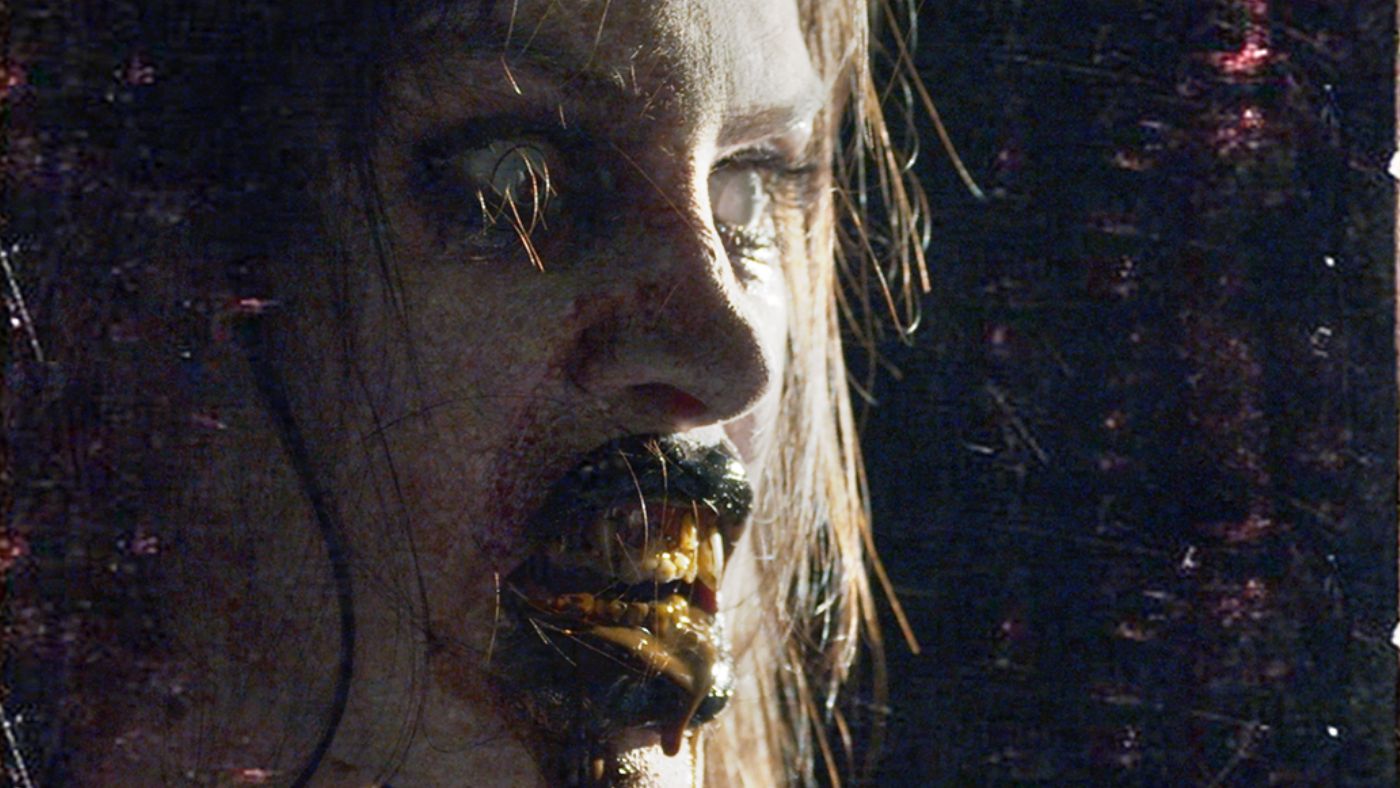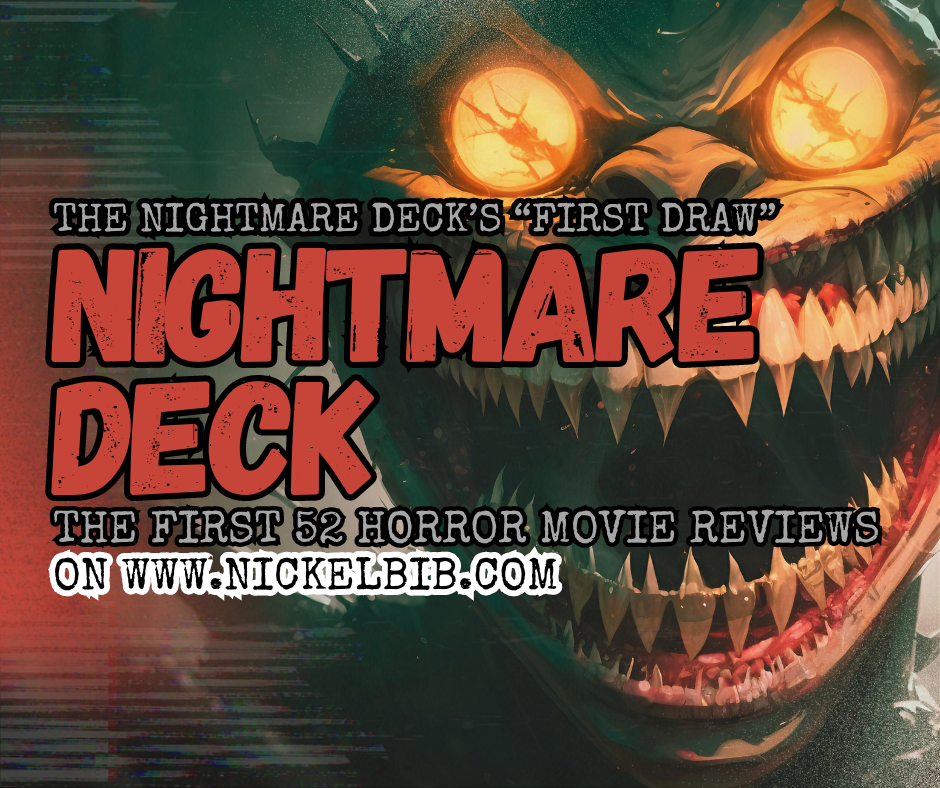Italian for yellow, ‘giallo’ is a genre of Italian filmmaking that blends elements of a murder mystery or whodunnit with other flavors of horror such as slashers, thrillers, or even terror of the psychological persuasion.
For me, I have always been on the outside looking in for giallo filmmaking, largely skeptical, yet still admittedly interested.
It can be difficult to engross oneself in a new medium of storytelling, even in good faith. Chances are, if I were to recommend somebody my favorite Full Moon Feature film, like Head of the Family, they wouldn’t have the same reaction to it that I did. I embarked on Full Moon’s particular flavor at an early age and, even though I harp on a lot of them (and for good reason), the ones I don’t harp on are because I have an acquired taste for them. I recognize their charm and their intention, the same way I am able to recognize why a “slasher” film isn’t always meant to be scary, but can also be meant to be fun and goofy.
In turn, I realize there is bound to be some facets of giallo films I won’t immediately understand or appreciate until I have had exposure to them.
Likewise, cinema and art in-general are tricky and complicated. It is part of the reason I advise a reader not to take it too personally whatever I may rate a film by the end. In-order to fully appreciate a film, not only do you have to be able to understand its intention, but you have to be able to understand its surroundings (a fact I will delve into deeper shortly).
Directed by Lucio Fulci, Don’t Torture a Duckling is widely seen as a highlight in the director’s filmography. Set in a small insular village someplace in Southern Italy, the film follows a detective investigating a series of child murders that are committed throughout the town.
The name “Don’t Torture a Duckling” is derived from a Donald Duck doll that appears in the film and plays a part in solving the murders.
Early on, the film features a scene where a young-boy sees a naked woman sprawled out near a pool. The young boy is, maybe, like thirteen or fourteen, or fifty (I’m not good with ages). The woman walks over to him and seductively flirts with him. There isn’t a whole lot of reason for me mentioning it, but I found it an odd inclusion, even if it makes some sense in hindsight why they did it. At some point in the film, you are called on and expected to like this character, and I think that is a tall-order by today’s standards.
The acting is decent, although I wouldn’t single-out anybody in-particular as a standout amongst them.
I will say straightaway the version I had was, unfortunately, a dubbed version on the Tubi streaming service (I normally prefer the subbed versions when it comes to live-action films, and I think this film embodies a lot of why that is). The voice-actors are mostly satisfactory, but it’d certainly have been preferable to hear the actual voices coming from each person’s mouths.
The storyline is interesting, if, perhaps, a little basic in construction. The themes involved are more potent than the actual narrative itself, which, stripped to its bare bones, is a rather predictable murder-mystery with an easy to telegraph outcome. The film’s themes include a commentary on sexuality and of the Catholic Church, as well as the consequences of superstition and paranoia (a particularly gruesome scene about midway through highlights this pretty well).
Of course, elements that I call predictable might not have been seen as such fifty years ago in Italy.
Also, too, its themes which are recognizable now, would have only been even more potent back then. The criticism of churches and their predatory nature also ends up feeling awful ahead of its time in hindsight.
Personally, as a citizen of the United States, who was raised in a small village with cornfields in-front of his house and behind his house, and more crazy religious fanatics than I care to remember, the uncertainty runs thick. When I was a kid and found out certain people accused J.K. Rowling of witchcraft or anti-Christian propaganda because she wrote Harry Potter, I thought it was absurd. However, the reality is, now, and especially back then, a lot of that nonsensical hysteria existed and sometimes when enough uneducated people become scared and paranoid, they can do a lot of damage left unchecked.
The themes are relevant, even today, but, admittedly, are fairly scattered and messy in how they’re laid out in the film. The characters, as well, I feel could have been integrated better than they were. There are a lot of ideas here. A lot of them pretty good. Most of them though, I feel like they could have been handled with a little more care than they were.
The visuals are nice to look at, offering nice shots at a small village in Italy, brimming with greenery and nature, which is always an upside. Back then, the special effects and violence was singled out and praised – and, uh, I can’t particularly bring myself to do that, per se. I can acknowledge that it is a low-budget film from the seventies, and that, by those standards, it looks good. However, by current day standards, or even standards set only a decade later, Don’t Torture a Duckling drew a couple chuckles from me. Unfortunately, they’re because the climactic death scene at the end involves an obvious-looking dummy. (In its defense, a death scene earlier in the film looked much more impressive.)
I have to commend the dark subject-matter shown in the film. Although the death scenes can be fairly comedic at times, I’ll mention another scene of a child dying from the friendliest, softest strangling ever captured on film as an example, the subject-matter is harsh. A lot of children’s skeletons and a lot of dark implications are involved in this film.
My favorite scene of the film is when a woman’s car breaks down and she receives assistance from a small boy. She offers him a kiss as restitution, and then, barely a second later, it shows the kid facedown in a puddle. The suddenness of it surprised me.
In total, I can’t say that Don’t Torture a Duckling kept me immersed from beginning to finish nor can I truly offer a recommendation of it to a casual viewer. That in mind, I do have a respect for what it did with what it had available to it, I commend its boldness, and believe it was a decent first film to start my foray into the genre.






GIPHY App Key not set. Please check settings